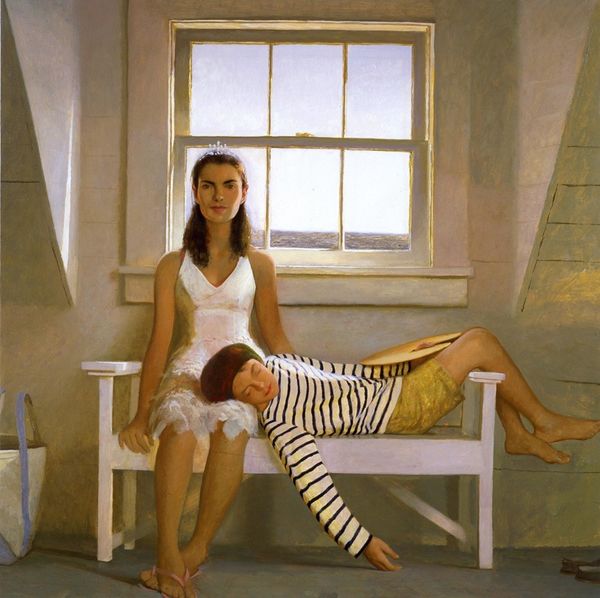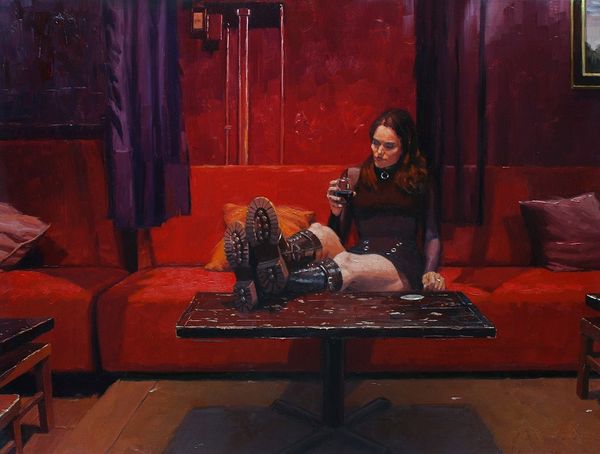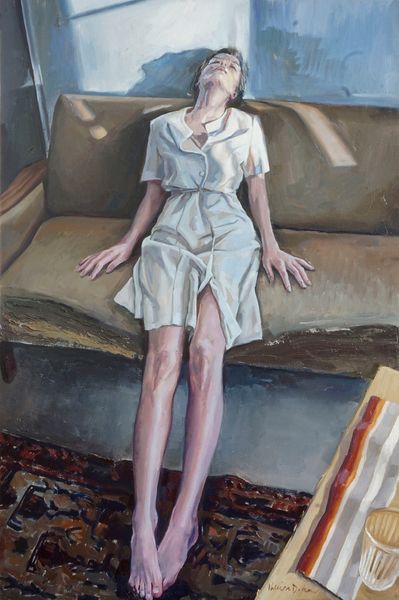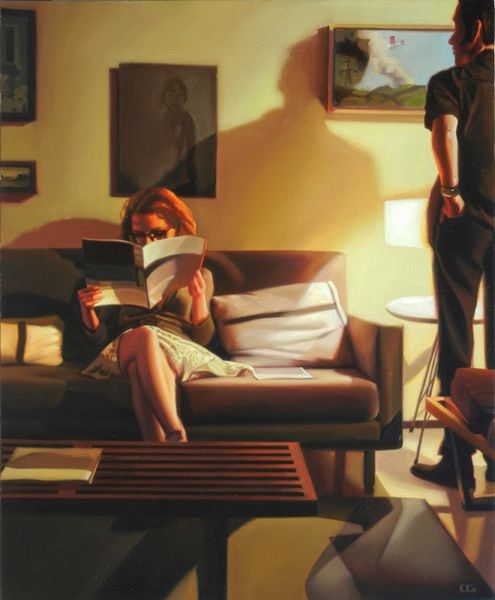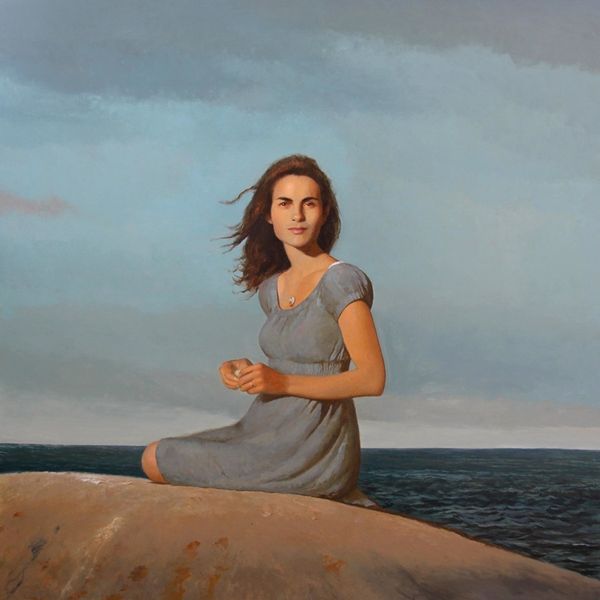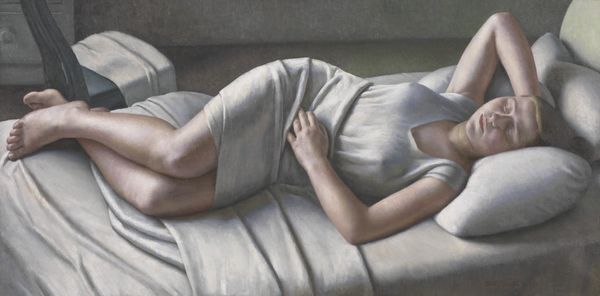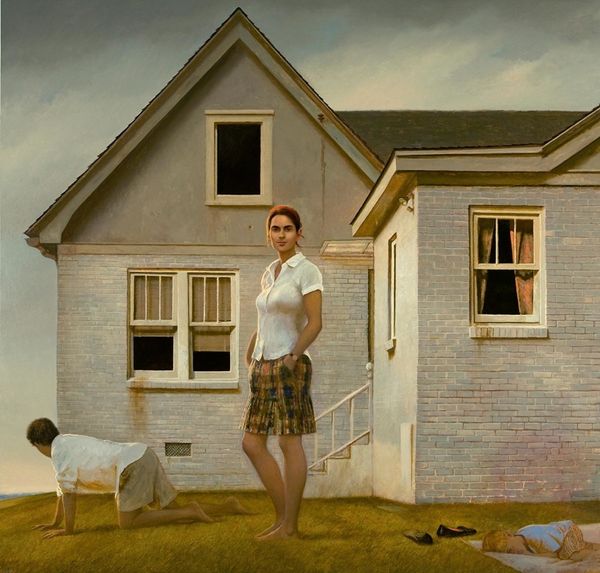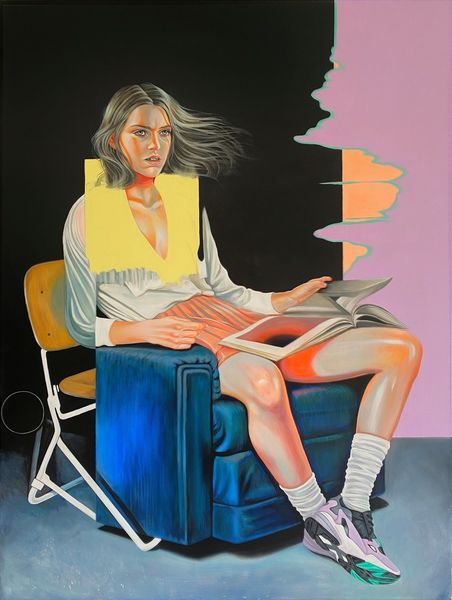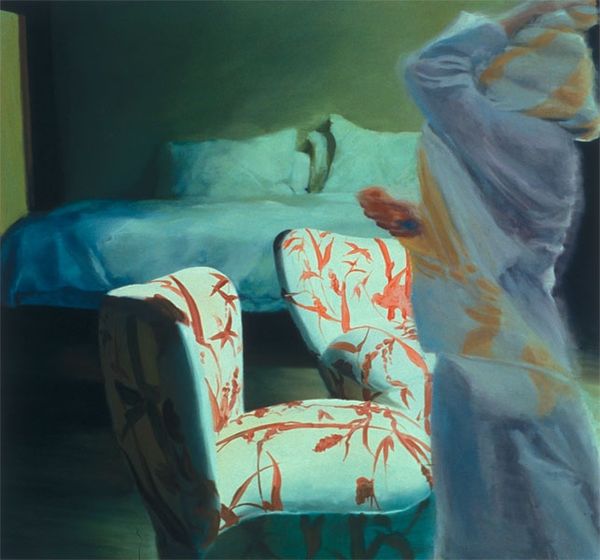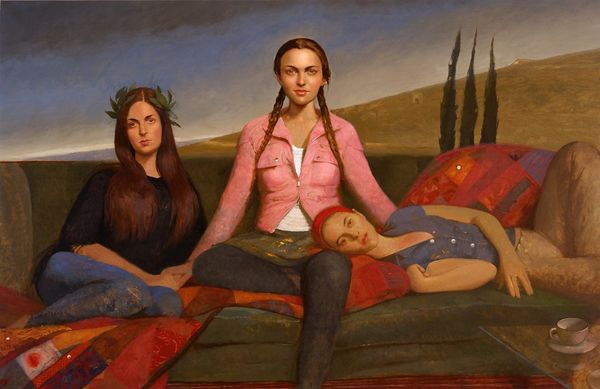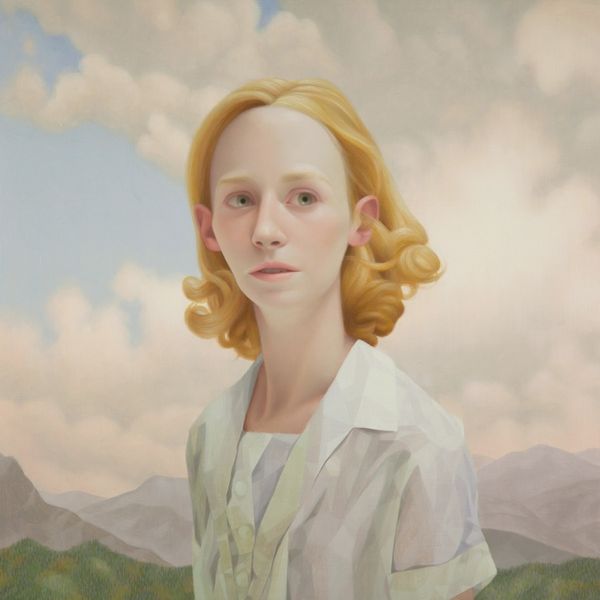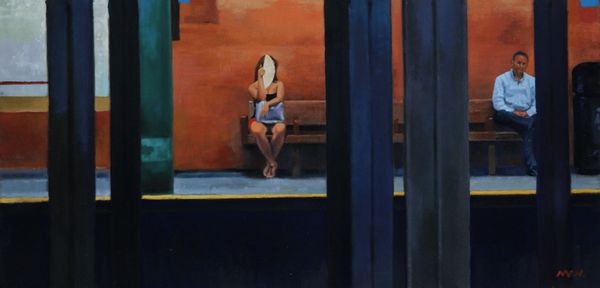
Copyright: Modern Artists: Artvee
Curator: We're looking at Bo Bartlett's 2001 oil painting, "The Babysitter," a piece that situates itself within a lineage of American realism, but pushes into interesting territory. Editor: The first thing that hits me is this potent feeling of nostalgia. The textures are painted with such care—like you could almost feel that couch! It's tinged with an odd kind of melancholy though, isn’t it? Curator: It's certainly more than just a snapshot. We can delve into how gender and labor intersect within domestic spaces, which Bartlett explores masterfully. Note her attire: the juxtaposition of the casual white shirt with the formal black skirt, and the white socks. The sitter has both youth and maturity. Editor: You know, there's a certain discomfort about her pose. She’s buttoning her shirt, but also seems a bit restless, as if she’s contemplating something just outside the frame. Maybe it's those watchful eyes... I feel a silent tension brewing beneath this rather quotidian scene. It's the feeling that something is slightly amiss. Curator: Precisely! Bartlett leverages the ordinary to speak volumes about societal expectations and female agency. Look at that discarded shoe on the floor. The history of that object echoes labor practices of domestic work. Her gaze also defies expectations—she isn’t passive. Editor: Definitely not passive. I almost feel like *I’m* the one being observed, a curious reversal. And it's fascinating how he handles light. Everything's very precise, clear, but it's all suffused with this golden, almost cinematic light that evokes… Edward Hopper. Curator: The reference to Hopper is quite fitting. And you know, examining the use of interior space is important too. How the couch acts as a stage, but also a barrier… almost pushing her forward as it pushes back at her. Editor: Yeah, it really emphasizes her liminality. Is she entering a space or departing? She’s ready and poised but where? Where is the actual mother going? What are her duties and responsibilities outside that very space? I'm definitely holding onto that slightly haunting mood—there’s definitely a mysterious edge here that goes far beyond what you first assume. Curator: Absolutely. The tension between realism and something almost dreamlike allows us to consider not just who she is, but who she is becoming, and the larger social forces shaping her experience in America.
Comments
No comments
Be the first to comment and join the conversation on the ultimate creative platform.
